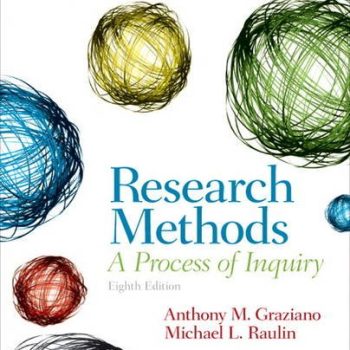Test Bank For Personality Psychology Domains of Knowledge About Human Nature 6th Edition by Randy Larsen
Chapter 03
Traits and Trait Taxonomies
Multiple Choice Questions
1. Most personality psychologists hypothesize that traits:A. are perhaps enduring over time.B. are reasonably unstable over time.C. are inconsistent over situations.D. are similar in all people.
Accessibility: Keyboard Navigation
2. Which of the following is NOT a fundamental question that guides those who study personality traits?A. How can traits be changed?B. How should traits be conceptualized?C. How can the most important traits be identified from among the thousands of ways in which individuals differ?D. How can a comprehensive taxonomy of traits be developed?
Accessibility: Keyboard Navigation
3. Which of the following statements is true about psychologists who view traits as internal dispositions?A. They avoid prejudging the cause of an individual’s behavior.B. They argue that the important individual differences among people must be first identified and described, and subsequently causal theories to explain them must be developed.C. They define traits simply as descriptive summaries of attributes of persons.D. They believe that traits can lie dormant in the sense that the capacities remain present even when particular behaviors are not actually expressed.
Accessibility: Keyboard Navigation
4. Which of the following is of the view that a trait is a descriptive summary of the general trend in a person’s behavior?A. Eysenck’s theoryB. The theoretical approachC. The act frequency approachD. The theory of sociosexual orientation
Accessibility: Keyboard Navigation
5. In the context of the act frequency approach, a robin is more _____ of the bird category than a penguin.A. prototypicalB. aerodynamicalC. orthodonticD. elemental
Accessibility: Keyboard Navigation
6. Which of the following is NOT a key element of the act frequency approach?A. Act nominationB. Assessing synonym frequencyC. Recording of act performanceD. Prototypicality judgment
Accessibility: Keyboard Navigation
7. Which of the following procedures helps researchers to identify hundreds of acts belonging to various trait categories?A. Act nominationB. Act effectivenessC. Act performanceD. Act likelihood
Accessibility: Keyboard Navigation
8. Robert conducts research to study the trait of empathy using the act frequency approach. Each participant is asked to list the specific acts or behaviors that they are most likely to associate with highly empathetic people. Robert collects a pool of 251 empathetic acts. This scenario exemplifies the act _____ procedure of the act frequency approach.A. nominalizationB. nomenclatureC. nominationD. nomothetic
Accessibility: Keyboard Navigation
9. In the context of the act frequency approach, which of the following involves identifying the acts that are most central to each trait category?A. Act nominationB. Synonym frequencyC. Cross-cultural universalityD. Prototypicality judgment
Accessibility: Keyboard Navigation
10. Which of the following is the final step in the act frequency approach?A. To identify the acts that are most central to each trait categoryB. To secure information on the actual performance of individuals in their daily livesC. To identify which acts belong in which trait categoriesD. To secure information on the importance of different traits in social communication









Reviews
There are no reviews yet.